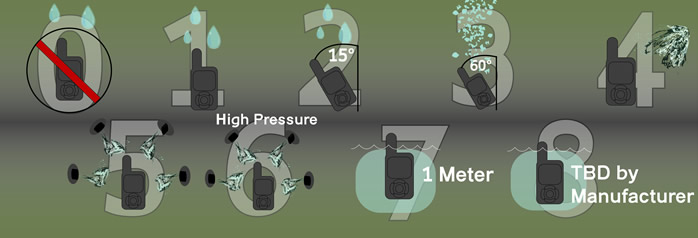Waterproofing Standards Demystified
- Details
This article originally published in the September 2010 issue of Adventure Insider Magazine.
Not all that long ago manufacturers simply labeled their items ‘waterproof ’. That label was awfully ambiguous. What exactly is waterproof? Rain? Lots of rain? Swimming? There is certainly a lot left to the imagination when interpreting the term ‘waterproof ’. The International Electrotechnical Commission’s (IEC) standard IEC 60529 aims to standardize testing of devices so you know exactly what a rated device can withstand.
No doubt you have seen standards such as IPX7, but unless you know the code, that doesn’t help you much. Let’s take a look at the code format and what it means. All devices certified to IEC 60529 start with ‘IP’ to indicate the standard is being applied, and then there are two digits that follow.
The first digit (0-6 or X) designates the device’s protection from solid objects. 0-4 indicate protection from items such as fingers and wires, but a rating of 5 or 6 may occasionally be used for consumer devices. A 5 indicates ‘dust protected’ meaning the device may let dust in but not in sufficient quantity to interfere with the proper operation. A 6 means ‘dust tight’ which indicates that the device is completely sealed to dust. Most consumer devices will generally carry an X, indicating the device was not tested for protection from solid objects.
The second digit following the ‘IP’ describes the protection from water, this is what we’re really concerned about. The digits range from 0-8. Refer to the following table to determine to what degree your new device can withstand exposure to water:

- Device is protected from vertically dripping water.
- Device is protected from dripping water when tilted up to 15˚ from it’s normal position.
- Device is protected from water falling as a spray at any angle up to 60˚ from it’s normal position.
- Device is protected from water splashing against the enclosure.
- Device is protected from water sprayed from jets at any angle.
- Device is protected from water sprayed from high pressure jets at any angle.
- Device is protected from ingress of water in sufficient quantity to damage device when submerged in up to 1m of water.
- Device is protected from ingress of water during continuous submersion under conditions specified by manufacturer.


